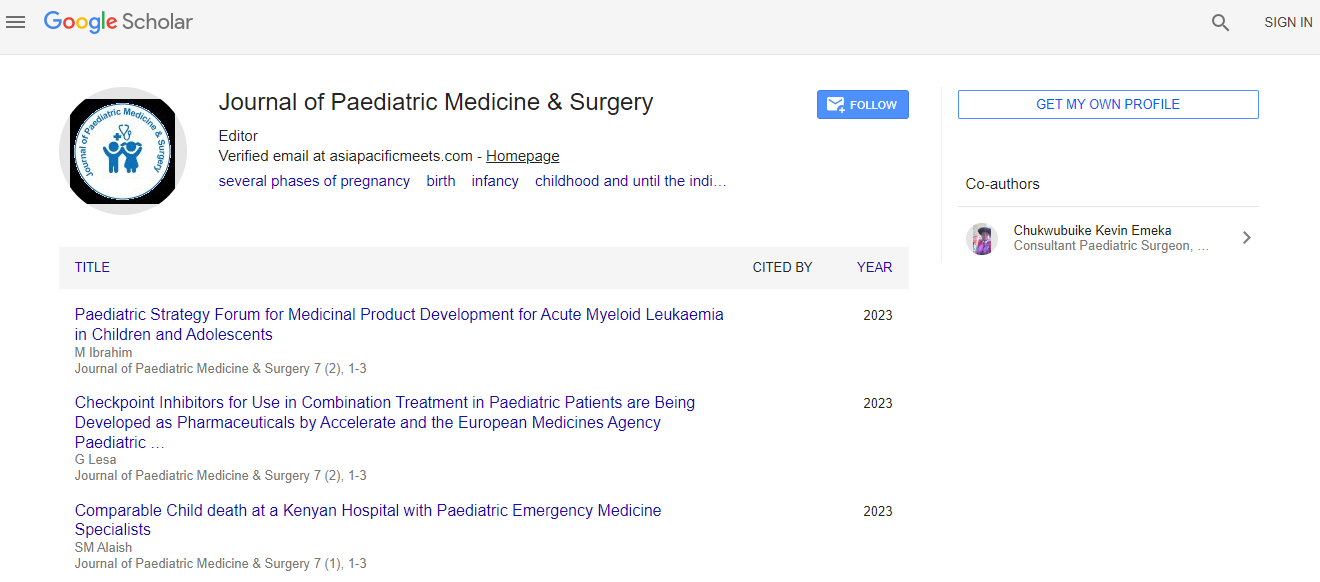Pediatrics Health 2020: The treatment of purulent meningitis in children 2 months-14 years - Mimoza Canga - University Ismail Qemali Vlora
*Corresponding Author:
Copyright: © 2020 . This is an open-access article distributed under the terms of the Creative Commons Attribution License, which permits unrestricted use, distribution, and reproduction in any medium, provided the original author and source are credited.
Abstract
Purpose: The purpose of this study is to evaluate the data found in the medical records of the patients with purulent meningitis in the hospital of Fieri, in Albania. Also this study aimed at investigating the ways used in treating this pathology, as well as, observing if these treatments were done according to the modern treatment protocol. The deficiencies of the treatments will be taken in consideration. Treatment for bacterial meningitis frequently includes intravenous (IV) antibiotics. The prior the treatment is introduced, the well your child's upshot. In addition to antibiotics, dexamethasone (a steroid) may also be given to children over six weeks of age who have acute bacterial meningitis. Prehospital care of kids with bacterial meningitis frequently is limited to transporting children who are unfavourably ill or have experienced a seizure. Meningitis is most habitually caused by a viral or bacterial infection that moves into the cerebral spinal fluid (CSF). CSF is the fluid that protects and cushions the brain and spinal cord. A fungus or parasite may also cause meningitis. This thing is usually more common only in children with a weak immune system. Meningitis caused by a virus is usually more common and less severe. Bacterial meningitis is generally more severe and may lead to long-term complications or death. Viruses that can cause meningitis include polioviruses, the mumps virus (paramyxovirus), the flu virus, and West Nile virus. Bacteria that can cause meningitis include group B streptococcus, E. coli, Haemophilus influenzae type b (Hib), and strep bacteria that causes pneumonia. Syphilis, tuberculosis, and Lyme disease bacteria can also cause meningitis. The bacteria, viruses, and fungi that cause meningitis usually grow in a person’s respiratory tract. Though a child may have no symptoms, but child may carry the organism in his or her throat and nose. General supportive care is required, depending on the child’s condition. Subsequent diagnosis of a potentially transmissible disease must be communicated to prehospital care providers, especially with N meningitidis infections. Patients must be treated in a facility where emergencies can be managed and nursing and medical staff are experienced in caring for critically ill patients. Accordingly, they may require a transfer to a pediatric hospital or large general hospital. A child is more at risk for meningitis if he or she has an infection caused by a number of viruses, bacteria, or fungi. Children with a weakened immune system are at great risk. The symptoms of meningitis vary depending on what causes the infection. The symptoms may start several days after your child has had a cold and runny nose, or diarrhea and vomiting. Symptoms can occur a bit differently in each child. Symptoms may appear suddenly. Or they may develop over several days.
Objective: Identifying the cases of purulent meningitis in Fieri hospital’s medical records database, during 2013-2019.
Material and Method: This is a retrospective study, carried out at the Fieri Regional Hospital, through studying and evaluating the medical record database of this hospital, focusing on cases with purulent meningitis, within the pediatric age range 4 months - 14 years old. The medical records taken under observation belonged to patients who were hospitalized in the hospital of Fier. Only 11 cases of this type of meningitis were found, 2 of which were taken to Tirana hospital, while, the remained 9 children were treated in the pediatric ward in the Fieri hospital.
Results: According to the records, purulent meningitis was diagnosed through lumbar puncture in only 4 children. The sample of fluid taken in the spinal cord was taken to the laboratory, where the diagnosis was confirmed. In all other cases the diagnosis was confirmed by the examination of the patient's clinical complaints (fever, headache, nucal rigidity and vomiting). No specific tests have been performed to find the type of pathogen that caused purulent meningitis. The medicaments used in treating these patients in Fieri's pediatrics were mainly Ceftazidime and Ampicillin.
Conclusion: Almost all the clinical cases were hospitalized during the year 2015. Their treatment was mainly done by the combination of ceftazidime and ampicillin at different doses according to the patient; the doses were reduced after the fifth day. Patients' condition was generally good, they remained hospitalized 10-12 days and they were hospital discharged when they were fully healed.
Recommendations: Medications should be used according to the micro pathogen found in the laboratory tests. Also the hospital should improve the database of purulent meningitis’ medical records.

 Spanish
Spanish  Chinese
Chinese  Russian
Russian  German
German  French
French  Japanese
Japanese  Portuguese
Portuguese  Hindi
Hindi 